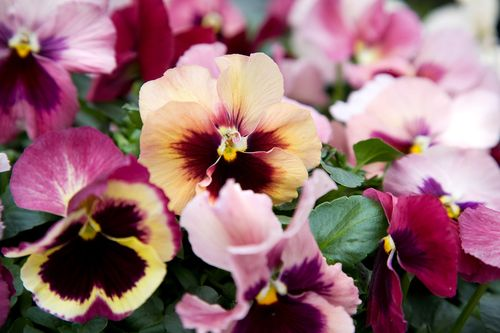 How do the plants, flowers and trees withstand the winter? The cold, frost and snow… While we shiver, wrap up warm or curl up by the fire, how do plants make it through this icy period?
How do the plants, flowers and trees withstand the winter? The cold, frost and snow… While we shiver, wrap up warm or curl up by the fire, how do plants make it through this icy period?
In winter, plants and flowers have to contend with not only the cold but the lack of sunshine, resource are scarce and without the vital sunshine plants can’t product quite nearly as much food as they can during the summer months. Most plants go into a state of sleep, not to the same length as some animals and their hibernation, but enough to reduce their activity and protect themselves during the tough time.
Here are a few examples of how different plants, trees and flowers adapt to survive the winter months:
- Deciduous trees lose their leaves in autumn. This natural phenomenon allows the tree to maximise its water reserves and prevent water evaporating from the leaves.
- Trees that don’t shed their leaves during winter, known as Evergreen, are able to resist the harsh conditions because they naturally use far less water. Trees such as fir trees and pine trees have leaves that closer resemble needles than the leaves we see on the floor. These leaves have evolved perfectly to use fewer resources and as such the tree can keep them.
- Bulbs and other tubers are well protected from the cold by a comfortable layer of soil, keeping the warmth and nutrients at hand.
- Other species normally have a life cycle of maybe one or two years, so for annual and biennial plants it’s not a concern if they naturally due at the end of this cycle. Before dying, they release seeds that will return and grow back in spring.
For any beautiful ornamental potted plants you may have in your garden or in your house, there are a few simple principles to bear in mind to ensure you can continue to receive maximum enjoyment from your plants.
- For any plants that would not face cold, frost or snow in their natural environment, for example hydrangea, they must be kept inside. We recommend keeping plants in a cool, airy place.
- Plants and bulbs can also be protected from harsh conditions by staying in a greenhouse. Placing straw around the stems and directly on the soil can serve to keep in warmth.
There are some perennial flowers that are very resistant to cold and frost. These plants are brilliant for bringing colour and cheer to your garden, even during the colder, darker months when the more common plants are in a state of stupor.
- Hellebore: This flower is extremely resistant to cold, known as the Christmas Rose or the Winter Rose, it’s not related to Roses at all but can be found bringing colour to any garden, even under a layer of snow. Easy to grow with very few demands, the hellebore has a low ground cover, and can even be perfectly displayed in a vase.
- Pheobe (Winter Erica): with its colourful bells, Phoebes bloom from December through to February and can tolerate cold and frost very well.
- Primrose: these are popular in pots or directly in the garden and are perfect for bringing colour to the otherwise cold winter garden.
- Pansy: these are the real survivor of winter. Pansies and violets are incredibly resistant to cold and frost, coping very well all through the cold winter months. Whether displayed on a balcony, in flowerpots or hanging baskets, the pansy is essential for a touch of happiness.
- Crocus: these small bulbs bloom in winter but are not as resistant to the frost as the other plants mentioned above.
- Snowdrops and Snowflakes: we find them very often in gardens and woods, and certainly can be considered one of the most cold-hardy flowers. The colder the weather, the longer the flowers last. When you see Snowdrops blooming, it is a positive signal that winter is soon coming to an end.
As for the plants in our overheated apartments, they sometimes struggle to resist winter, precisely because of this heat. Placing these plants near a heater is not ideal, the leaves can turn yellow – not through lack of water but through lack of light. The worst conditions for plants in winter is a darkened room. Take the time and care to find a good balance between watering, light and heat.
Spraying the leaves from time to time with water is sometimes essential to the survival of more exotic flowers plants who need humidity.
Amaryllis, anthurium, orchid, kalanchoe are just a few of the seasonal plants you will find in florist shops and garden centres this season. If you wish to bring cheer to someone special’s day, send flowers and some colourful plants this cold winter and make someone happy.





